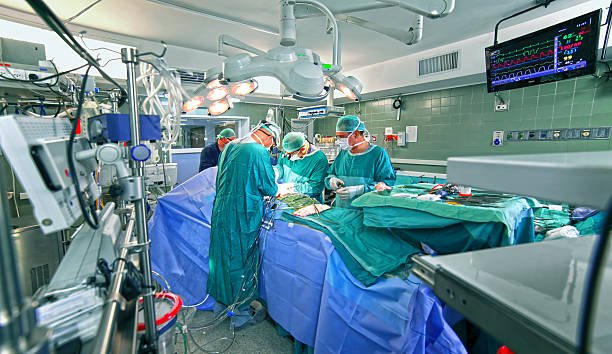
Which Specialist Should I See For Palpitations, High Blood Pressure, and Chest Tightness? Cardiologist or Surgeon?
There are many symptoms related to heart disease, such as common heart cramps, chest tightness or headaches. Related diseases include high blood pressure, arrhythmia or myocarditis, etc. However, many people are often confused whether they should see a cardiologist or a cardiac surgery? This article explains it to you!
Compare the scope of cardiologist and cardiac surgeon – diagnosis and treatment!
If people experience any heart discomfort, such as chest tightness, palpitations, or high blood pressure, they can first seek help from a cardiology department and receive a diagnosis from a cardiologist before further treatment.
Heart discomfort and high blood pressure? Just see a cardiologist first
If people have the following 6 common symptoms, they can first seek help from a cardiologist
- Palpitations
When the heartbeat suddenly changes rapidly and slowly, and there is abnormal beating, it is very likely that there is a heart problem, including congenital heart disease, myocarditis, pericarditis or heart valve disease, etc., which may cause palpitations; if the patient has palpitations in addition to palpitations, If it is also combined with dizziness, chest tightness, night sweats, or even fainting, you should seek medical examination at a cardiology department as soon as possible. - Chest tightness
Chest tightness caused by heart problems is common in patients with coronary heart disease. In addition to a strong sense of tightness and pain, the pain will not be relieved after changing the current posture, especially during exercise; if the patient feels tightness in the chest or even back pain , you may have to go to the cardiology clinic to check heart-related functions. - High blood pressure
Normal blood pressure values are systolic blood pressure <120 and diastolic blood pressure <80. If the above values are exceeded, it is prehypertension. Long-term hypertension can easily cause changes in the structure and function of the heart, leading to hypertensive heart disease. Many patients may also suffer from long-term hypertension, which can lead to valvular heart disease, such as mitral stenosis, mitral valve insufficiency, and trichocardial insufficiency. Cusp stenosis or tricuspid valve insufficiency, etc. - Difficulty breathing
Dyspnea caused by heart disease often occurs when patients perform sports or outdoor activities, such as ischemic heart disease, heart valve disease or heart failure, etc., which are all causes of dyspnea in patients. If the patient suddenly has symptoms occur, you should stop exercising and sit down to rest. If symptoms do not improve, please dial 999 or 112 immediately to call an ambulance and seek medical attention. - Dizziness
Many people think that dizziness is only caused by anemia or hypoglycemia, but they ignore their own heart health, which is also a potential factor in causing dizziness. Heart problems such as arrhythmia, ischemic heart disease or heart valve disease may all cause the disease. Reduced blood circulation and blood flow to the brain can cause dizziness or even fainting. - Chest pain
Chest pain caused by heart disease does not cause a sharp stabbing pain in the left chest. Instead, the patient will experience a tight, extremely compressed, and unbearable pain in the center of the chest, which will gradually spread to the left shoulder. , left arm and left hand.
The types of heart disease that cause this kind of chest pain, including angina, pericardial inflammation, acute myocardial infarction, and aortic dissection, usually occur over a short period of time, and the chest pain will not be relieved by stopping the current activity.
After diagnosis by the cardiology department, diagnosis and treatment are performed through cardiac catheterization. For example, using a cardiac catheter with a contrast agent to observe the blood flow of the patient’s heart vessels; or using a catheter to perform coronary artery balloon dilation, place a vascular stent, or replace an artificial valve. Solve heart problems such as blood vessel blockage, valve prolapse or insufficiency.
Since cardiac catheterization only uses a thin catheter to puncture the femoral artery, there is no need to saw the sternum open like traditional heart surgery. The postoperative wound is only slightly larger than the pinhole, which can effectively reduce the patient’s postoperative pain and shorten the length of the recovery period.

What does a cardiac surgeon perform?
Cardiac surgery mainly performs surgeries on patients with various heart, aorta and arterial vascular diseases. Here are some common diagnosis and treatment scopes of cardiac surgery:
- Coronary artery bypass surgery:
Coronary artery bypass surgery removes blood vessels from other parts of the patient’s body and connects them to the coronary arteries on the heart to increase blood circulation to the heart muscles and solve the patient’s myocardial ischemia problem. - Heart valve repair surgery:
It is mostly used for patients with simple atresia, such as mitral valve insufficiency and tricuspid atresia. Heart valve repair surgery can repair, fix or remove excess tissue of the problematic valve structure. Allow the heart valves to return to normal function. - Aortic dissection surgery:
When abnormal blood pressure or external pressure occurs in blood vessels, the inner layer of the blood vessel will rupture and separate from the outer layer of the blood vessel, causing aortic dissection. At this time, aortic dissection surgery is required. - Ventricular assist device placement:
By placing a ventricular assist device (VAD), blood can be drained from the atrium or ventricle into the blood pump and then returned to the artery to reduce the burden on the heart. It is mostly used for acute myocardial infarction, heart failure, or chronic heart failure when waiting for heart replacement surgery. - Extracorporeal Membrane Oxygenation Surgery, ECMO :
ECMO is also called body membrane oxygenation. ECMO surgery mainly uses a pump to drain the venous blood of patients with acute cardiopulmonary failure to the outside of the body, and performs gas exchange through the Ye Ke membrane. Afterwards, it is then infused back into the patient’s artery or vein, which can temporarily support the heart and lung function, allowing the patient to survive the dangerous period until the heart and lung function recovers.













